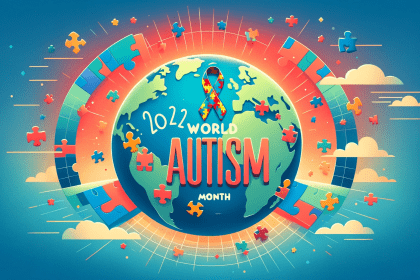
How Can ABA Therapy Help Parents Relieve Stress?
By Patricio Erhard
Everything happens for a reason. At least, according to science, everything happens for a reason. For example, if I were to throw an apple in the air, we can all presume that the apple will fall. Well, according to behavior analysis, the same is true for behavior. All behavior happens for a reason. If I ask a friend for water, it will likely be reinforced with getting a bottle of water. Likewise, if a kid engages in a tantrum at a store, it’s for a reason, and that reason may not seem so clear to a parent since that can be a pretty stressful situation.
Why is this so important?
Well, for starters, knowing that everything happens for a reason means that ALL changes in behaviors, whether it is an increase in water-requesting behavior or decrease in tantrum behavior, are caused by something, most likely through REINFORCEMENT or PUNISHMENT. In other words, there is a direct relationship between the behaviors people engage in and whether our environment produces a desired or undesired outcome in relation to those behaviors.
Let’s go back to the example of the water. By asking my friend for water, one can determine that (1) I was once taught how to ask for water and (2) that engaging in that behavior has yielded my desired outcome (a bottle of water) in the past and, therefore, will probably happen again if I ask for water.
Think about it! Reinforcement is a POWERFUL tool (punishment can also work, but it’s not as effective, and we don’t revert to its use unless it’s absolutely necessary). It’s the WHOLE reason you, your child, the barista at your favorite coffee shop, engage in behaviors. Well, there are some exceptions, but for our purpose, we won’t be looking into those. Regardless, using reinforcement the right way can help SUBSTANTIALLY. Let’s go through a scenario.
Ok, so behavior happens for a reason. But how can this help me?
“You see a parent and their child walking with their kid down the aisles of your local Target and their kid sees a Paw Patrol toy. He/She points and says “Can we get it PLEASE PLEASE PLEASE PLEASE?” and the parent says, “No, sorry sweetheart but you already have 3,” which triggers the kid to flop on the floor and cry uncontrollably. The parent tells him/her, “Ok you can get it but only if you calm down.” He/she immediately gets up and grabs the toy he/she wanted from the shelf.”
Similarly to the water example, we can determine that (1) this kid once learned how to flop and cry and (2) that engaging in that behavior has yielded their desired outcome (the toy) in the past and, therefore, will probably happen again. In other words, the kid’s tantrum was REINFORCED by the toy now and in the past. Let’s go through the same scenario with some changes.

“You see a parent and their child walking with their kid down the aisles of your local Target and, before the family goes through the toy aisle, the parent tells the kid, “if you follow my instructions and stay calm, you can have 10 more mins of play time with your Paw Patrol app at home.”
The kid then points and sees the Paw Patrol toy and says, “Can we get it PLEASE PLEASE PLEASE PLEASE?” and the parent says, “no sweetheart, sorry but you already have 3, but you can play with you Paw Patrol app IF you can stay calm and follow my instructions.’
We can see that the parent made some small modifications to decrease the chances that the kid would engage in challenging behavior. The parent:
- Proactively made a reinforcement plan prior to going through the toy aisle
- Told his/her child which behaviors would yield reinforcement
- Provided the child with reinforcement that was similar to the item they wanted

What are some other tips, besides the ones you just mentioned, that can help me with some stressful situations like that?
- Find really cool, effective reinforcers.
- Find toys and activities that you can use as motivators.
- Make sure those toys/activities ACTUALLY work at increasing behavior. If they don’t, then they’re technically not reinforcers.
- Figure out a SPECIFIC behavior to increase.
- Pick a behavior you want your kid to improve on. Whatever it is, make sure you select one that you can comfortably and consistently work on. Set yourself up for success by picking one instead of many. Learn about why that matters here.
- Embrace proactivity by planning ahead.
- Use the motivators you found and only make them available if your kid engages in that specific behavior.
- Communicate
- Be clear on what needs to happen for your kid to get the reinforcer they want.
- Measure it
- It’s important that you track your progress and your child’s progress too. How will you know how they’re doing well? What’re the criteria for success and when should you move on to another behavior?
Are there other strategies that have helped you out in the past? Share your success stories with us on Facebook or Twitter!
About the Author:
Patricio Erhard, M.Ed obtained his Masters in Special Education from Texas State University and has been helping children of all abilities for over 7 years. Patricio is currently employed at Cultivate Behavioral Health and Education, which was named a top 5% behavioral health center by the Behavior Health Center of Excellence in 2017, 2018, & 2019.
At Cultivate, the staff constantly pursues innovation and never settles for mediocrity, which results in a relentless nature and an excellent package of learning strategies that are fun, compassionate, and evidence-based. If you’d like to learn more about us and how we are innovating the process of learning, click here.




